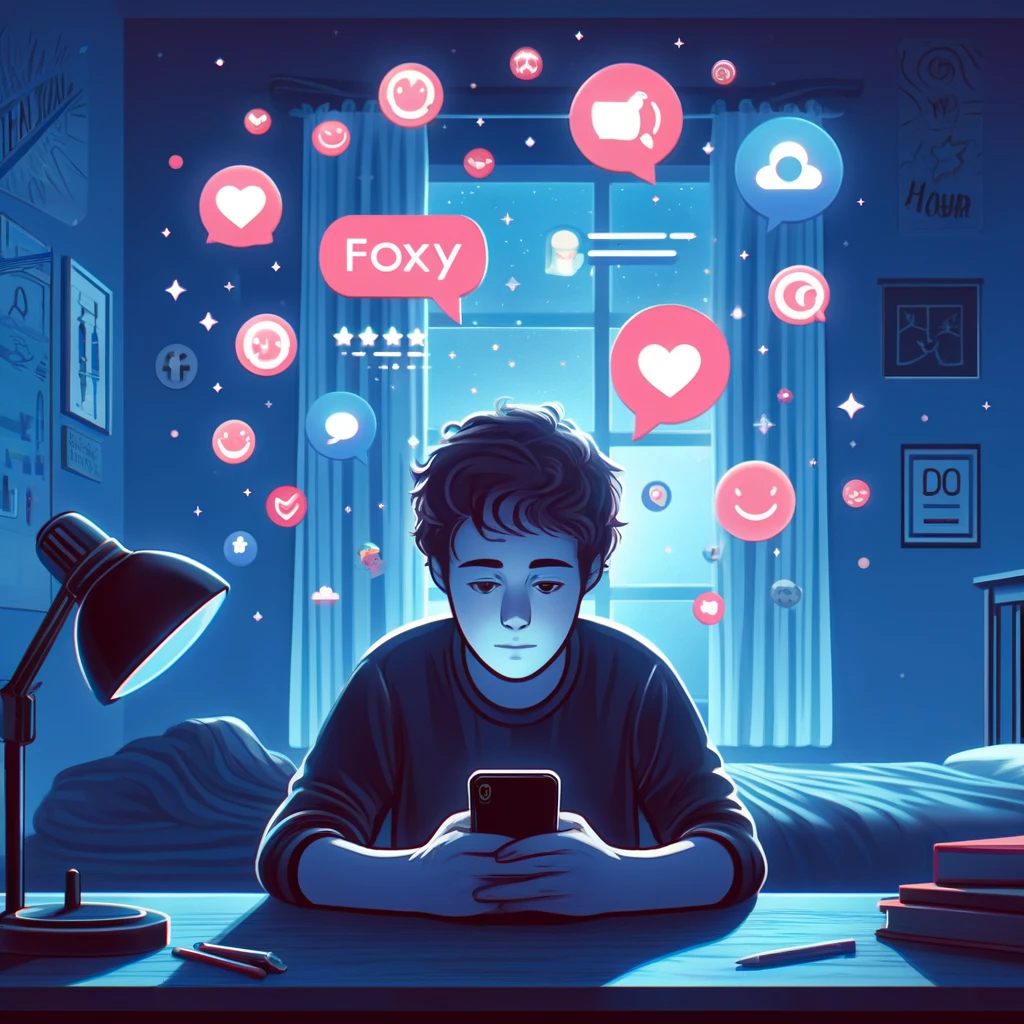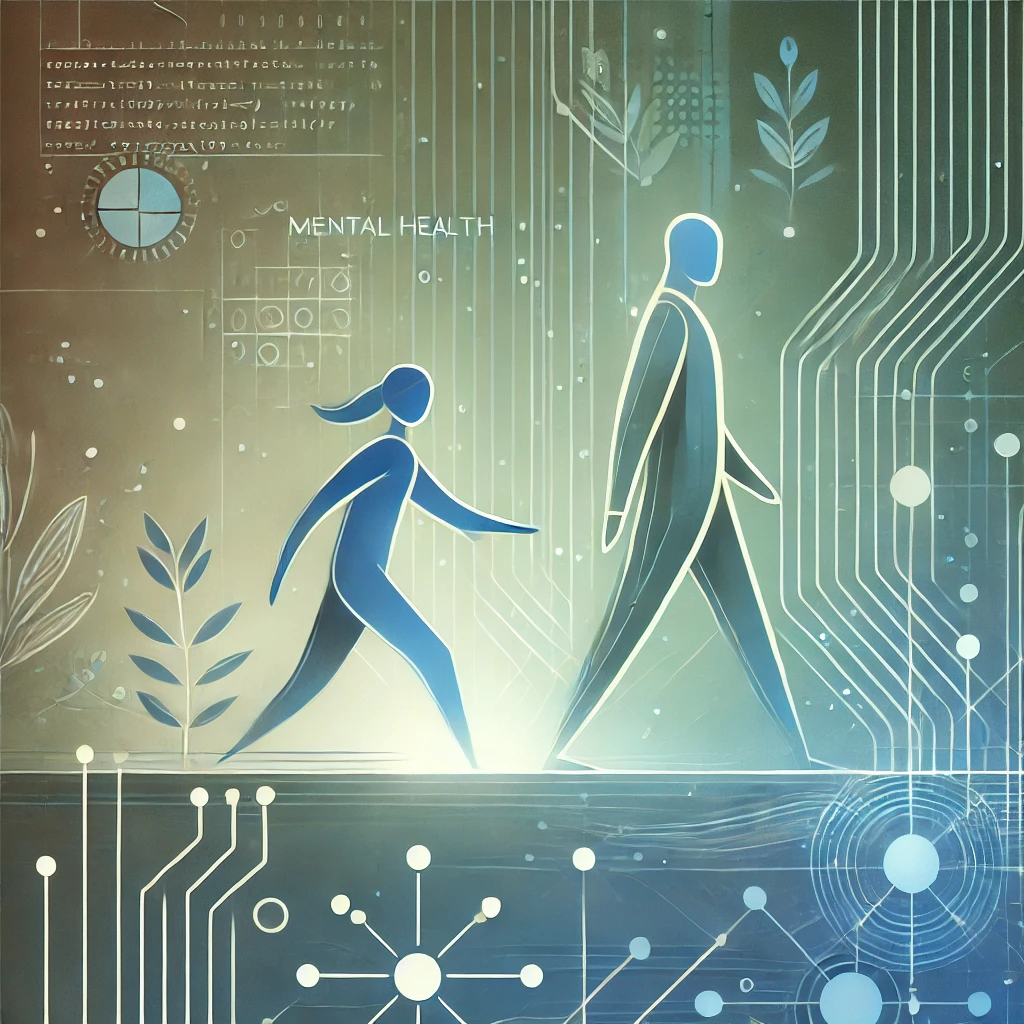The omnipresence of social media is the peak of connection and an absolute nightmare—offering boundless interaction while potentially ensnaring the vulnerable minds of teens in its bullshit psychological web. Hyperconnectivity is all so new to us in generational terms and came on very suddenly. All the stats point towards the generation that never knew a time before Instagram, which has been absolutely brain-nuked into an anxious spiral.
Is social media fueling anxiety among our youth? It seems obvious, but let’s explore what experts, not just some cybersecurity guy with a blog, have to say. Jonathan Haidt’s recent book, The Anxious Generation, sets out to answer this question. I’m a big fan of Haidt’s work and have read many of his books.
Haidt proposes that the absolute explosive reach of smartphones and social media platforms has not only reshaped the landscape of what it means to grow up in this world but may also be exacerbating mental health challenges.
The Argument for Technology’s Impact
In The Anxious Generation, Haidt argues that the advent of smartphones and the ubiquity of social media have been the epicenter of a mental health pandemic, reshaping how young people interact with the world and develop emotionally and socially.
The data around mental health struggles in our children, particularly young girls, all went haywire a decade ago. One day we lived in a world without the ability to constantly view and critique each other’s daily boring ass lives; the next, we had to make sure the right filter was on our faces so we didn’t get bullied the next day at school.
As young kids navigate their formative years, they are not just technology users. They are living within ecosystems designed to capture and monopolize their attention.
I have long defended the use of technology for kids. I grew up building my own computers and hijacking my home phone line to get on the Internet in my room, and it formed into a lifelong passion for technology. But then I had a really good point presented to me: I was using the Internet before the best and brightest of our world started working for online advertisers with the sole purpose of grabbing more milliseconds of my attention.
From a technological standpoint, user interfaces and notification systems are not benign features. These elements are meticulously engineered to create habits and dependencies. For instance, the “infinite scroll” feature standard on platforms like Instagram and Twitter exploits the human inclination for variable rewards. Swipe the slot machine and see what you win from the bottom of your screen.
Each pull-to-refresh offers just enough unpredictability in timing and reward to keep the user engaged and returning for more.
Notifications also serve as constant nagging to re-engage.
The red notification badges and pop-up messages are designed using principles from behavioral psychology to trigger dopamine hits, reinforcing the habit loop. Such features can lead to compulsive behaviors, particularly in teenagers who are developing self-regulation capabilities.
The security implications are also significant; these compulsions can make teens vulnerable to cyber threats, from phishing attacks leveraging social engineering to privacy breaches through seemingly innocuous app permissions.
By understanding these dynamics, we can begin to see how the digital environment is uniquely poised to influence teen psychology. It’s not just that teens are using technology; it’s that the technology is using them, shaping their perceptions, reactions, and overall mental health in ways that were scarcely possible in previous generations.
The Skeptics’ View
While the argument that smartphones and social media are reshaping the mental landscape of our youth is compelling, we need to consider the counterarguments presented by researchers like Candice L. Odgers.
In her critique, Odgers points out that the narrative suggesting digital technologies are solely responsible for a mental health epidemic among teens might not only be simplistic but also misleading.
This suggestion leads us to ask, well, what the hell else could it be? There are, of course, the usual suspects to consider, such as socioeconomic disparities, family dynamics, and inherent psychological predispositions.
It made me think of Hank Green’s Razor:

Odgers and her colleagues argue that the data linking social media use to mental health problems are not as clear-cut as they might appear. Much of the research in this area relies on correlational data, which can indicate connections but does not establish causation.
For example, while some studies find a relationship between screen time and decreased well-being, these studies often fail to consider other variables that might influence both factors, such as underlying mental health conditions or stressors unrelated to technology use.
From a technological perspective, interpreting data on social media use and mental health deterioration presents its own set of challenges. The algorithms that curate what users see on platforms can skew perceptions of how others live, potentially distorting self-image and exacerbating feelings of inadequacy.
However, proving that these algorithms cause mental health declines rather than merely contributing to them is complex and requires rigorous, longitudinal studies that can isolate specific variables within the vast web of user interactions.
It’s crucial to acknowledge the role of digital literacy in mediating these effects. Teens equipped with skills to assess online information and manage their digital footprints critically may experience social media differently from those who need to be more informed. This suggests a need for more nuanced discussions around the role of education and parental guidance in preparing young people to navigate digital spaces responsibly.
Personal Insights and Community Input
In discussions with peers and observations within the tech community—where I’m deeply embedded—the narrative is consistent: there’s a profound impact on our children, and it’s not always for the better.
From personal experience and countless conversations, the pattern emerges—increased screen time often correlates with heightened anxiety and a sense of inadequacy among teens. This isn’t just parental anxiety speaking; it’s what we see on the ground.
The dopamine hit from a ‘like,’ the anxiety from a lack of them—it’s real, and it’s shaping behaviors and self-esteem.
I’ve witnessed friends’ children transform from outgoing and vibrant to withdrawn and anxious, tethered to their devices. This is not an isolated case or two; it’s a trend. And in these observations, the question isn’t merely academic; it’s profoundly personal and feels just plain urgent.
But here’s where you come in. I want to hear from you—parents, teachers, teens themselves. Share your stories.
How has social media impacted your mental health or that of someone you care about? Are there strategies you’ve found effective in managing these influences? Your input is crucial, not just for understanding but for shaping the way forward. Share your insights, your fears, and your triumphs.
Drop your thoughts to me wherever we interact, via email or, ironically, social media. Let’s dissect this, discuss it, and understand it together. We all live at the intersection of technology and mental health, and every insight, shared experience, and articulated challenge enriches our understanding and approach to digital well-being.
Broader Implications and Future Outlook
This intersection of social media and mental health does not exist in a vacuum; it has significant societal implications that extend far beyond individual users. The findings we’ve discussed beg a broader question: how should our society adapt to mitigate the negative impacts while enhancing the positives of digital technologies?
First, the need for school digital literacy programs is becoming apparent.
The next generation needs to be more tech-savvy and tech-wise. Schools could play a pivotal role by integrating digital literacy into their curricula, teaching students how to use technology, and understanding its effects on their minds and behaviors.
Such programs would empower students and their parents to make informed decisions about their technology use, recognize manipulative design features, and understand their digital footprints’ personal and social consequences.
Furthermore, this debate should inform changes in tech policy. Lawmakers need to consider regulations that protect young users from social media platforms’ more insidious aspects, such as addictive algorithms and data privacy concerns.
There is a growing call for tech companies to be more transparent about how they design their platforms and how these designs affect users. Policies that promote ethical design principles could help steer the development of technologies that enhance well-being without sacrificing engagement.
Looking to the future, the dialogue between technology and mental health will only grow louder. Research in this field is rapidly evolving, and as we learn more, we expect new technologies that either exacerbate current issues or help solve them.
For instance, emerging technologies like augmented reality (AR) and virtual reality (VR) promise to revolutionize social interactions, with potential impacts on mental health that are only beginning to be understood.
WTF will we learn about the implications of interacting over the 2nd edition Apple Vision Pros if they become more ubiquitous? Who knows.
Moreover, as artificial intelligence becomes increasingly sophisticated, its integration into social media platforms could lead to more personalized user experiences. While this could improve engagement and satisfaction, it raises significant ethical and mental health concerns, particularly regarding data privacy and AI’s potential to manipulate emotions.
We’re already seeing data plummet on teens dating each other and a rise in AI dating apps where people interact with fake suitors. Creating a custom girlfriend on an app and then chatting with it is becoming a big business. Where will that lead us?
Conclusion
This isn’t just about how long kids spend online; it’s about their interactions with technology and how these interactions shape their development, perceptions, and overall well-being.
We still have much to learn here and need continued research and dialogue.
In moving forward, it’s important to advocate for a balanced approach to technology usage. Mindfulness and responsible digital consumption should be integral parts of this balance, promoting a healthy physical, mental, and emotional lifestyle.
Encouraging such practices—from setting boundaries on screen time to fostering awareness of the effects of digital interactions—can help individuals navigate the digital world more safely and wholesomely.
Ultimately, the goal is to cultivate an environment where technology serves as a tool for positive development rather than a trigger for anxiety.
By continuing to engage in thoughtful discussions, sharing experiences, and implementing educational and policy initiatives, we can help steer the conversation toward solutions prioritizing our youth’s mental health and well-being.



